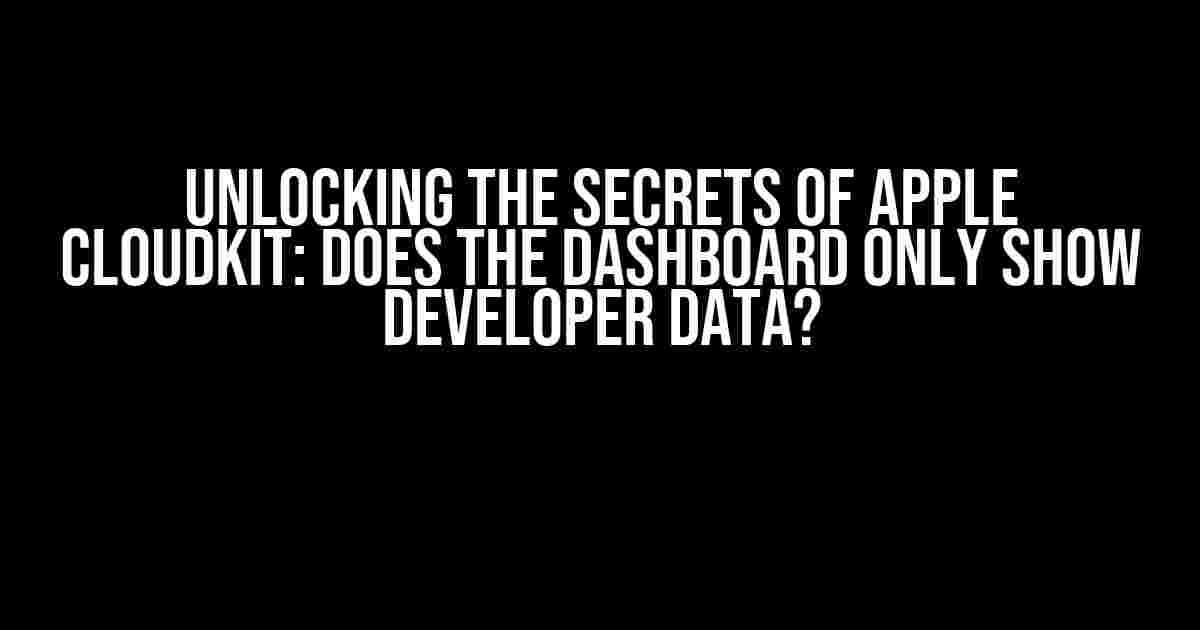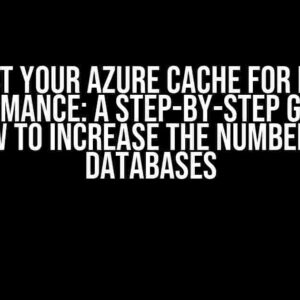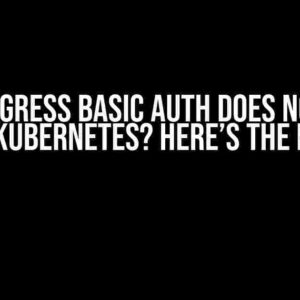As a developer, you’re no stranger to the world of CloudKit, Apple’s powerful cloud-based storage solution. But have you ever wondered, does the Apple CloudKit dashboard only show developer data? In this article, we’ll dive deep into the world of CloudKit, exploring what kind of data the dashboard displays, and more importantly, how to master it for your next big project.
What is Apple CloudKit?
Before we dive into the nitty-gritty of the CloudKit dashboard, let’s take a quick refresher on what CloudKit is all about. CloudKit is a backend service provided by Apple, allowing developers to store and manage data in the cloud. With CloudKit, you can create, modify, and access your app’s data from anywhere, without worrying about the complexities of server-side development.
What kind of data can you store in CloudKit?
CloudKit allows you to store a wide range of data types, including:
- User data: Store user information, such as names, emails, and profiles.
- App data: Save game scores, app settings, and other miscellaneous data.
- Core Data: Integrate CloudKit with Core Data to store and sync your app’s data model.
- Assets: Store and manage assets like images, videos, and audio files.
What does the CloudKit dashboard show?
Now that we’ve covered the basics, let’s get to the juicy part – what does the CloudKit dashboard actually show? The CloudKit dashboard is the centralized hub where you can manage and monitor your app’s data. When you log in to the dashboard, you’ll see a summary of your app’s data, including:
- Record counts: Get an overview of the total number of records stored in your container.
- Storage usage: Monitor your app’s storage usage, including the total amount of data stored and the storage costs.
- Operations: View a list of recent operations performed on your data, including create, update, and delete actions.
- Schema: Manage your data schema, including the definition of your record types and fields.
- Roles: Assign roles to team members, controlling their access to your app’s data.
But does it only show developer data?
Ah, the million-dollar question! The answer is, yes, the CloudKit dashboard primarily shows developer data. By default, the dashboard is only accessible to the developer team members, and it’s intended to provide a centralized view of the app’s data for development, testing, and debugging purposes.
However, that doesn’t mean you can’t use CloudKit to store and manage user data. In fact, CloudKit provides robust features for storing and managing user data, including authentication and authorization mechanisms to ensure secure data access.
How to master the CloudKit dashboard
Now that we’ve established what the CloudKit dashboard shows, let’s dive into some practical tips and tricks to help you master it:
Organize your data with containers and zones
CloudKit allows you to create multiple containers and zones to organize your data. Containers represent a logical grouping of data, while zones define a specific scope within a container. Use containers and zones to separate your app’s data into logical sections, making it easier to manage and access.
CKContainer *container = [[CKContainer alloc] initWithIdentifier:@"iCloud.com.example.app"];
CKDatabase *publicDatabase = [container publicCloudDatabase];
CKRecordZone *zone = [[CKRecordZone alloc] initWithZoneName:@"publicZone"];
Use record types and fields to define your data schema
CloudKit uses record types and fields to define your data schema. Record types represent a specific type of data, such as a user profile or a game score, while fields define the individual attributes within a record type. Use record types and fields to define a robust data schema that meets your app’s requirements.
CKRecordType *recordType = [CKRecordType recordTypeWithRecordName:@"UserProfile"];
[recordType.addField:[CKField fieldWithibName:@"username" type:CKFieldTypeString]];
[recordType.addField:[CKField fieldWithibName:@"email" type:CKFieldTypeString]];
Take advantage of CloudKit’s built-in features
CloudKit provides a range of built-in features to simplify data management, including:
- Atomic operations: Perform multiple operations as a single, atomic unit, ensuring data consistency.
- Conflict resolution: CloudKit provides built-in conflict resolution mechanisms to handle concurrent updates.
- Data encryption: CloudKit encrypts data at rest and in transit, ensuring secure data storage and transmission.
Monitor and debug your app’s data
The CloudKit dashboard provides a range of tools to help you monitor and debug your app’s data, including:
- Record-level logging: View detailed logs for each record operation, including create, update, and delete actions.
- Error reporting: Get notified of errors and exceptions, making it easier to identify and fix issues.
- Data visualization: Use CloudKit’s built-in data visualization tools to visualize your app’s data and identify trends.
Conclusion
In conclusion, the Apple CloudKit dashboard primarily shows developer data, but it’s designed to be a powerful tool for managing and accessing user data as well. By mastering the CloudKit dashboard, you can unlock the full potential of CloudKit, creating robust and scalable apps that meet the needs of your users.
Remember, the key to success lies in organizing your data with containers and zones, defining a robust data schema, taking advantage of CloudKit’s built-in features, and monitoring and debugging your app’s data. With these tips and tricks, you’ll be well on your way to becoming a CloudKit master.
| Feature | Description |
|---|---|
| Record-level logging | View detailed logs for each record operation |
| Error reporting | Get notified of errors and exceptions |
| Data visualization | Visualize your app’s data and identify trends |
So, what are you waiting for? Dive into the world of CloudKit and start mastering the dashboard today!
Frequently Asked Question
Got some burning questions about Apple CloudKit dashboard? We’ve got the answers!
Does the Apple CloudKit dashboard only show developer data?
Ah-ha! According to Apple’s official documentation, the CloudKit Dashboard is designed specifically for developers to monitor and manage their app’s data. So, yes, it primarily focuses on displaying development-related data. However, developers can also use the CloudKit Dashboard to inspect and debug their app’s production data, making it a convenient all-in-one tool!
What kind of data can I view in the CloudKit Dashboard?
The CloudKit Dashboard offers a wealth of data insights! You can view your app’s metadata, such as container and record types, as well as the actual data stored in CloudKit, including records, assets, and subscriptions. This allows you to monitor performance, identify issues, and optimize your app’s data management.
Can I use the CloudKit Dashboard for data analytics?
While the CloudKit Dashboard does provide some data insights, it’s not a full-fledged analytics tool. Its primary focus is on helping developers debug and manage their app’s data. If you need more in-depth analytics, consider integrating third-party services or using Apple’s own analytics tools, like App Analytics or CloudKit’s built-in metrics.
Can I access the CloudKit Dashboard from my Apple device?
Unfortunately, the CloudKit Dashboard is only accessible via the web, so you’ll need to use a computer to access it. However, this does mean you can use any device with a web browser to monitor and manage your app’s data, making it super convenient!
Is the CloudKit Dashboard free to use?
Yes, the CloudKit Dashboard is absolutely free to use! As part of Apple’s CloudKit service, it’s included with your developer account, so you can take advantage of its features without incurring any additional costs.



